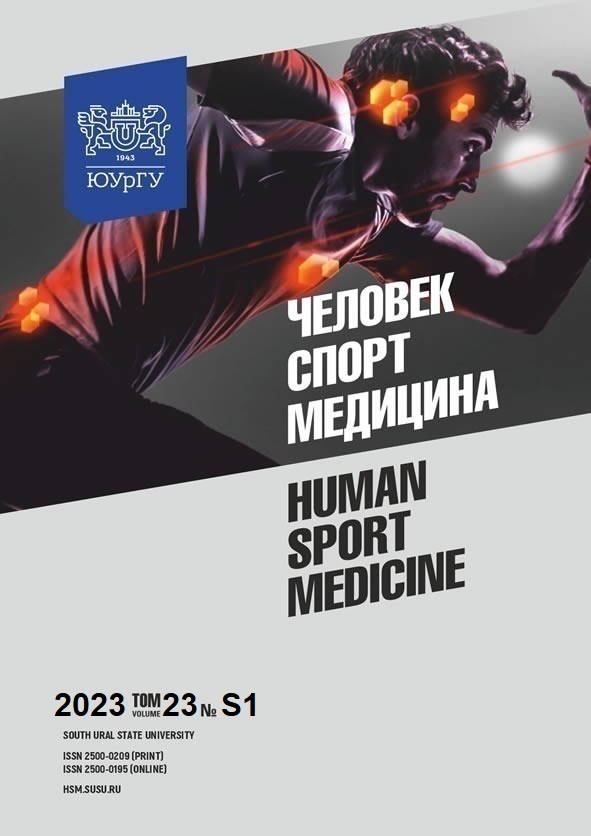RECOVERY RATE IN FOOTBALL PLAYERS AFTER DIFFERENT SHUTTLE RUN TEST PROTOCOLS
Abstract
Aim. The paper was aimed at evaluating the recovery rate of football players during different shuttle run test protocols. Materials and methods. The study involved 52 football players of various skill levels. All athletes completed one submaximal and two maximal shuttle run test protocols, namely the interval shuttle run test, the 7 × 50 m test, and the peak test. All tests were carried out during a competitive microcycle with one game per week, on the third day after the game. Heart rate was continuously recorded using a heart rate monitor (Garmin), and running speed was measured with the Wimu Pro device (Spain). At the first, third, and fifth minutes of recovery, lactate concentration was measured in finger blood. Results. The peak test was characterized by a greater load associated with accelerations and decelerations, which resulted in high lactate levels and slow recovery. In the 7 × 50 m test, the players performed a greater load in the form of high-speed running, which led to a significant increase in lactate concentration and increased lactate levels within 5 minutes after the test. The interval shuttle run test was characterized by a lower load and lactate concentration compared to maximal tests, both after the test and during recovery. Conclusion. Maximal tests should be used with caution in the competitive microcycle since they place high demands on the muscular system, the cardiovascular system, and the energy systems, which can adversely affect performance and increase the risk of injury. The use of maximal tests in the competitive period should be limited.
References
References on translit
Copyright (c) 2023 Human. Sport. Medicine

This work is licensed under a Creative Commons Attribution-NonCommercial-NoDerivatives 4.0 International License.















